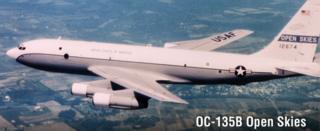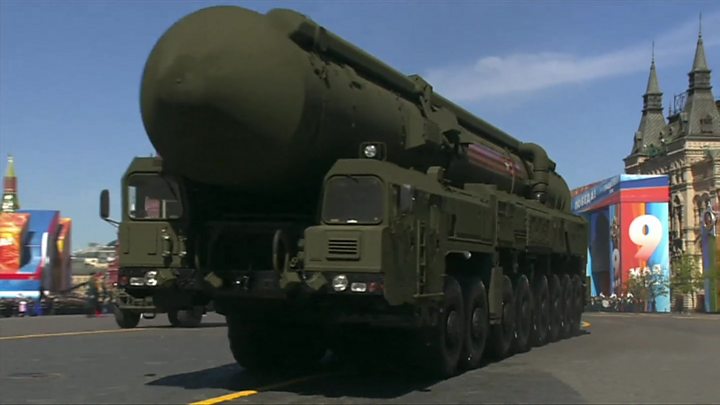US-Russia surveillance flights treaty under threat
Last February, a four-engined US OC-135B aircraft – a variant of the old Stratolifter military transport plane – lumbered into the air to conduct a surveillance flight over Russia.
Among those on board were six Russian officials to ensure fair-play. It was all part of a little-known agreement – the Open Skies Treaty – that since entering into force in 2002 has enabled unarmed reconnaissance flights over Russia, the United States and several other countries to improve confidence and assure against surprise attack.
Now this treaty is under threat. Reports suggest that US President Donald Trump has already signed a document giving the necessary six months’ notice for withdrawal, though his administration still seems divided as to whether this treaty should be maintained. Former Defence Secretary James Mattis, while still serving in his post, declared that it was in the United States’ “best interests” to remain in the treaty despite the alleged Russian violations.
Indeed the statistics are striking. The US has flown three times as many flights annually over Russia as the Russians have flown over the US. Between 2002 and 2016 there were 196 US flight plans logged versus 71 by Russia. In addition the US can request copies of the imagery from flights conducted by other signatories. Since 2002 there have been more than 500 such flights over Russia. During recent years, Russia has flown between four and nine missions each year over the US, while the US has flown between 14 and 16 flights over Russia.
The idea of instituting surveillance flights of this kind dates back to the height of the Cold War years and was first proposed by US President Dwight Eisenhower in 1955. It was ultimately pushed forward by President George H.W. Bush as a way of promoting stability in Europe after the fall of communism.
Signed in March 1992, the Open Skies Treaty permits each party state to conduct unarmed reconnaissance flights over the others’ entire territories to collect data on military forces and activities. There are clear rules about the type of monitoring equipment to be used, the procedures and so on. Some 34 countries are members of the treaty and no territory can be declared off-limits by a host nation.
The flights can often be at short-notice. For example in December 2018 the US carried out an Open Skies flight over eastern Ukraine shortly after Russia attacked Ukrainian ships in the Black Sea. The flight – which was requested by Ukraine – carried observers from several nations. Indeed this kind of flight can often be mounted faster than a satellite can be moved into position. Nonetheless the agreement’s advocates insist that it is as much about confidence-building as surveillance.
The aircraft used are highly specialised. The US OC-135B Open Skies aircraft is derived from the design of the venerable Boeing 707 airframe. Canada uses a C-130 Hercules with a sophisticated sensor pod. A consortium of western nations uses this system as well. The Russians and a few former eastern-bloc countries use Antonov An-30 turbo-prop aircraft for their flights, though Russia has also used Tupolev Tu214ON jets.
The ostensible reason for the US considering abandoning the Open Skies Treaty is alleged Russian misbehaviour. There were no Open Skies flights over Russia in 2018 after a dispute over on-board observers. The US has accused Russia of violating the treaty by applying excessive constraints on surveillance flights over the Russian enclave of Kaliningrad, between Lithuania and Poland. Russia is also said to have prevented the US and Canada from carrying out a flight near a military exercise in central Russia last September. There are those in Washington who regard the treaty as simply a mandate for Russian snooping.
Arms control advocates do not dismiss these complaints.
But they believe that the treaty still retains many benefits for all sides. They also point to the wider context. This is not the first arms control agreement that the Trump administration has abandoned. Indeed the whole fabric of arms control inherited from the Cold War era is collapsing. Its keystone – the New Strategic Arms Reduction Treaty or START agreement – which expires in 2021, may lapse since there is little enthusiasm for its extension.
Arms control advocates insist this matters. We are seeing a new era of strategic competition between the big powers. Frightening new weapons systems are being developed, like very high-speed, hypersonic missiles, which threaten to overturn existing strategic conventions.
Artificial intelligence may also undermine deterrence. With new tensions and new technology, many insist that the old arms control order – including agreements like the Open Skies Treaty – should be bolstered and not discarded.
Source: Read Full Article




